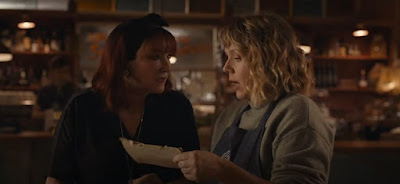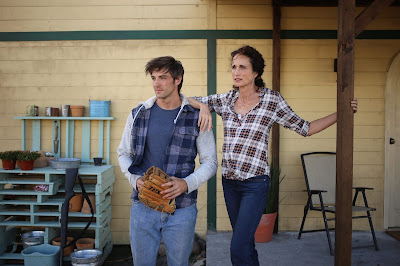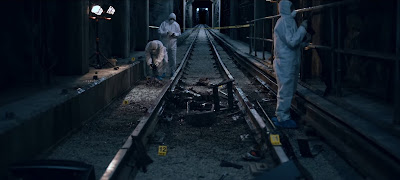Minamata is the story of war photographer W. Eugene Smith who travels back to Japan where he documents the devastating effect of mercury poisoning in coastal communities.
Minimata is, quite simply, Johnny Depp in his most restrained role in recent memory. Gone are the overly flamboyant mannerisms and behaviours of Willy Wonka, The Mad Hatter, and Captain Jack Sparrow. Here we are instead treated to another David vs Goliath scenario, with an emotionally reclusive individual taking on a big corporation.
Based on a true story, Depp portrays W. Eugene Smith, a photographer for TIME Magazine, back when they used to do weekly periodicals. An old war-time photographer, still living with the occasional bouts of PTSD and languishing in the decline of investigative journalism, as his reputation and career start to recede into obscurity. Given a final chance to pull back the curtain on the tragedies being caused in the wake of boosting profits, Smith (and metaphorically Depp) head out for one last chance at redemption.
Minimata refers to the Minimata disease, a neurological syndrome caused by severe mercury poisoning, and leads to numbness in the hands and feet, general muscle weakness, loss of peripheral vision, damage to hearing and speech, and in extreme cases, insanity, paralysis, coma, and death. The disease makes up two of Japan's Four Big Pollution Diseases (a group of man-made diseases all caused by environmental pollution due to improper handling of industrial wastes by Japanese corporations.) With a knowingly negligent big corporate, and the solo cameraman ready to expose the big bad to the Western world, Minimata has the ingredients for a tense thriller, but director, Andrew Levitas, holds firm with a dramatic tone that ultimately prevents the film from having a strong an impact as one would want.
While Depp disappears into the role (and scruffy grey beard) of Smith, fully taking on the complexities of his personality, Smith, unfortunately, lacks any sense of charisma. His own emotional detachment from the scenario is engrained in the audience, and while he may, in the end, do what is right, his journey to that conclusion is not only turbulent and distorted but swings from one extreme to the other with little to no narrative justification. While his emotional detachment is passed on to the audience, his change in consciousness isn't, and it leaves Minimata feeling flat and formulaic, like a child learning to read a book; more focused on how to say the words, than understanding the meaning of the sequence of words.
Combine the uncharismatic lead with the sluggish, dramatic pacing, and Minimata starts to lose its power and suspense; elements that are further corroded by an unnecessary side plot. The film starts to focus more on Smith himself, and his relationship with TIME magazine, rather than emotionally connecting with the tragedy before him. The situation of a corporation causing death and disease through knowingly polluting a waterway is still conveyed in a cohesive enough manner to ensure the audience is filled with frustration, anger, and contempt, towards these corporates that have little vision beyond the bottom line of their profits and loss report, attempting to justify the collateral damage of their business.
Where Minimata excels, is in its cinematography and production design. The recreation of the seaside Japanese town from the 70s is exceptional, and cinematographer Benoît Delhomme continues that detailed work with a rousing mix of handheld and professional tracking shots that create a noticeable juxtaposition. Transitioning between black-and-white (Smith's chosen medium) and colour, Minimata carefully moves between dramatizations (colour) and accurate recreations of past events (black-and-white). The use of handheld also brings greater emphasis to the grassroots community's tireless protesting.
Regrettably, the authenticity of the cinematography and heartbreaking visuals are not enough to make Minimata more than a by-the-numbers biopic. Smith's role is never over-glorified at the expense of the Japanese locals, and sensitivity is shown towards the struggles, ticks, and deformities, but Levitas' focus is too fractured and keeps pulling away the Japanese fight to shed light on the secondary plot thread. This story needed the audience's full attention, and it certainly would have had it, if not for the constant diversions to the TIME Magazine offices. A wasted opportunity, that turns an absolutely heart-wrenching story, into something mediocre.
Minimata is still a film worth checking out. Any reminder that corporations don't care about people, is a good reminder. but while the film's visuals may haunt you during the credits, Depp's unremarkable performance makes the memory of the film fade quickly.
Minamata is in cinemas from June 3, 2021
Originally posted to: https://djin.nz/Kr8849




































